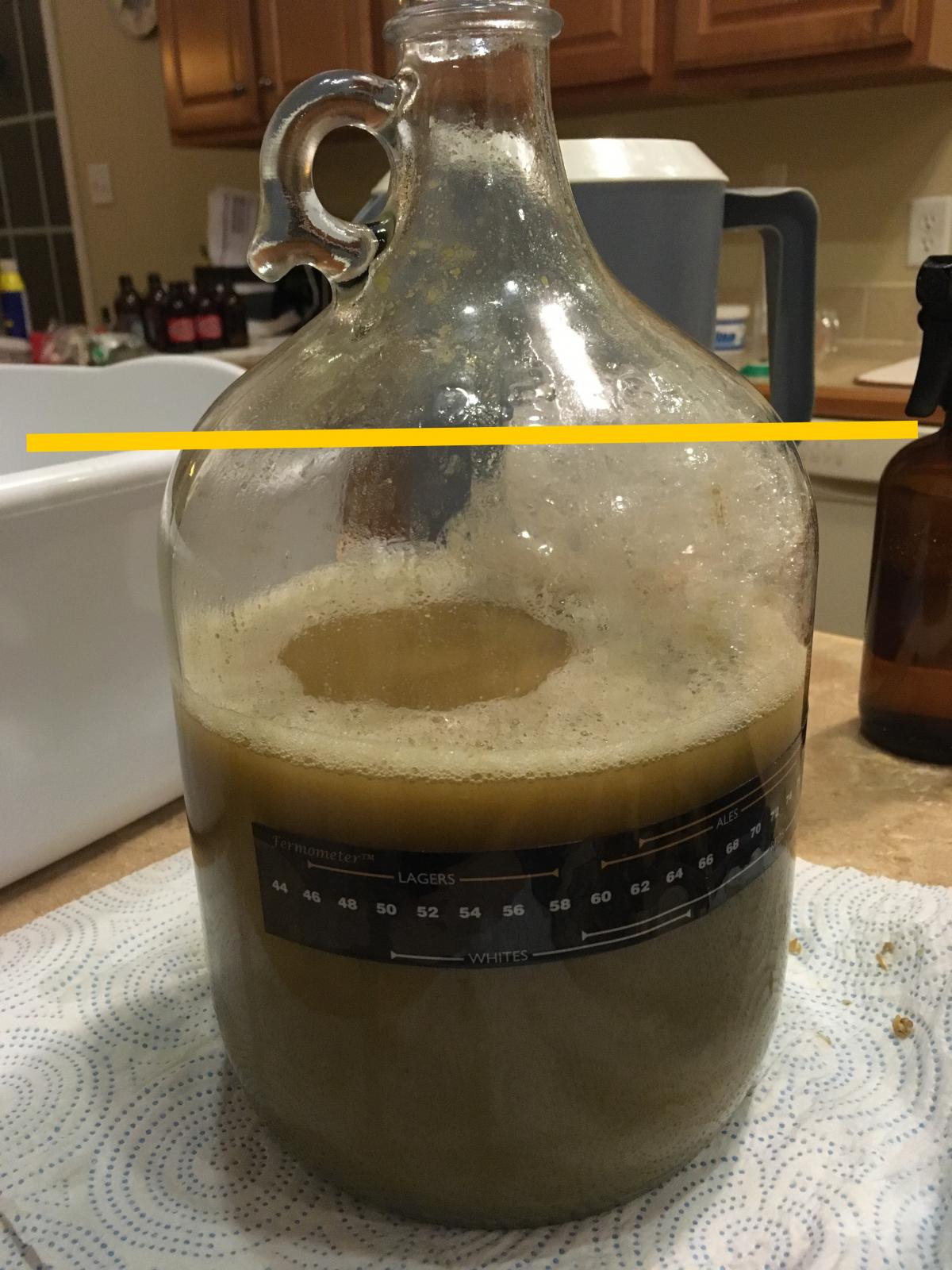Just finished creating my second batch of 1 gallon beer (a Cream Ale).
Everything went well until I poured my cooled boil into my 1 gallon jug and about 1/3 had evaporated during the boil (also lost some while transferring between stockpots during the sparge stage). See photo.
I topped the gallon off with tap water. What should I be expecting in the coming days/end product?
FYI: I used 26 cups of water, total. 10 cups for the mash and 16 cups for the sparge.

Everything went well until I poured my cooled boil into my 1 gallon jug and about 1/3 had evaporated during the boil (also lost some while transferring between stockpots during the sparge stage). See photo.
I topped the gallon off with tap water. What should I be expecting in the coming days/end product?
FYI: I used 26 cups of water, total. 10 cups for the mash and 16 cups for the sparge.






